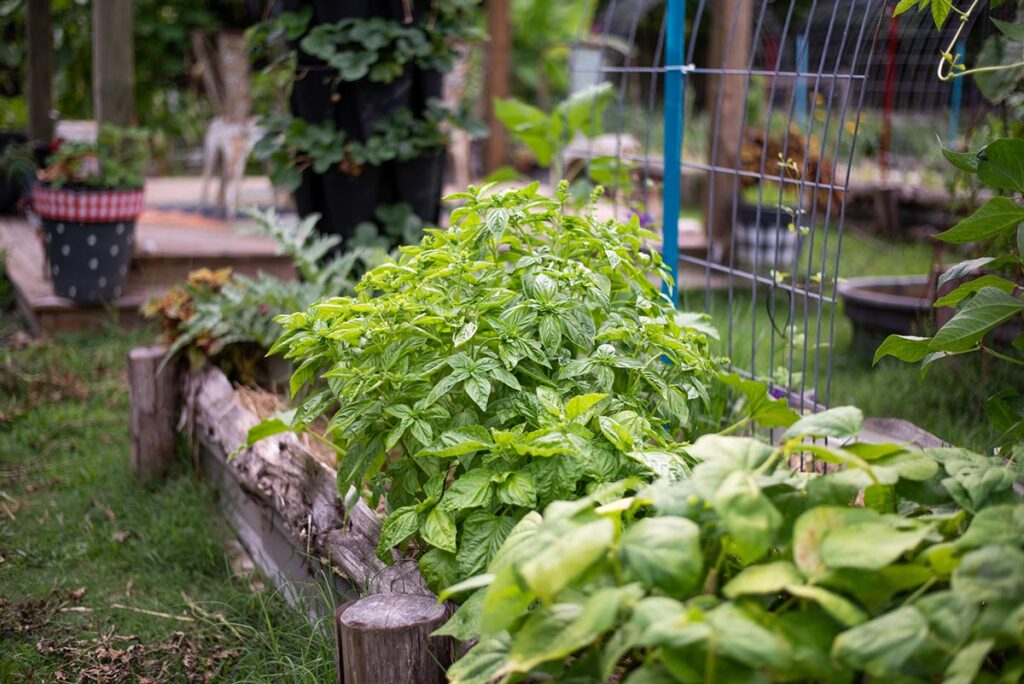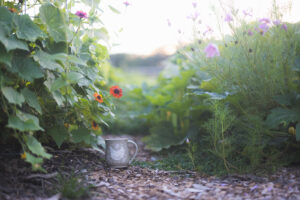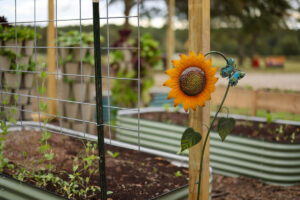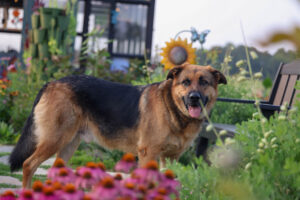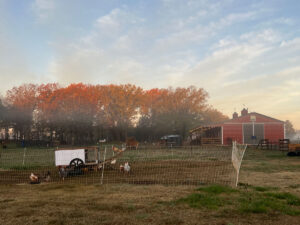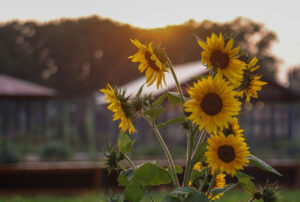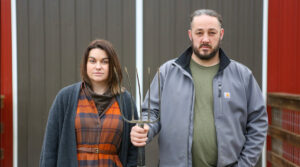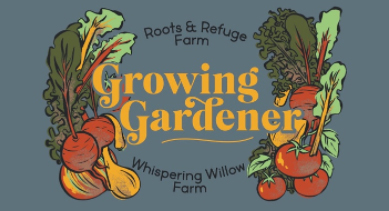Carrots don’t always have a reputation as an easy-to-grow crop. When you know the basics such as how deep and how far apart to plant the seeds, knowing how to plant carrot seeds becomes a whole lot less of a mystery. This tutorial covers the basics along with whether you need to start your seeds indoors or if you can direct sow in a garden bed, container, or pot. Complete with a bonus tip to ensure successful germination!
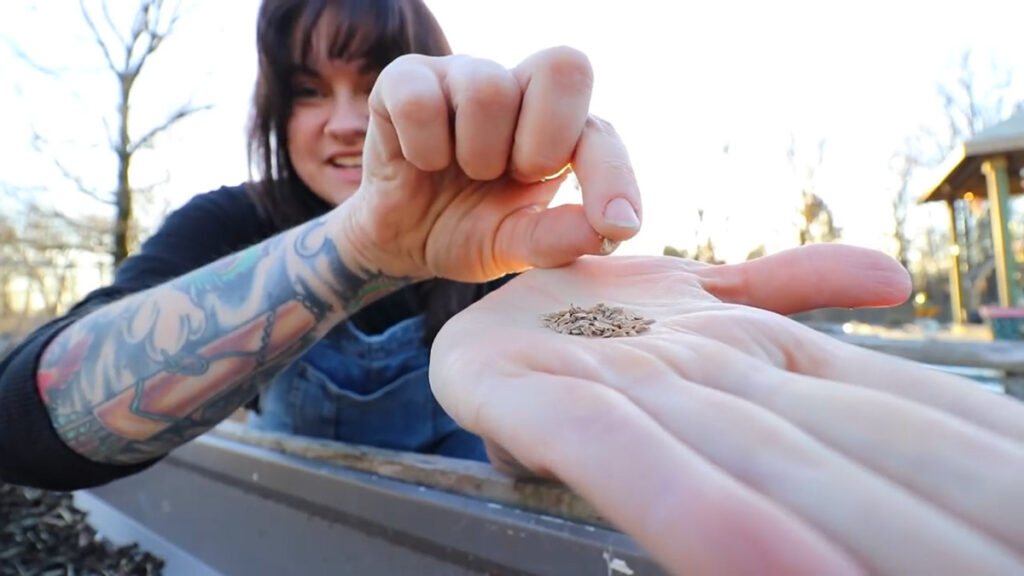
Why You Should Learn How to Plant Carrot Seeds
Carrots are on my must-grow garden list for heirloom seeds for good reason. Carrots have a wide window of opportunity to sow from early spring through mid-summer. They can withstand frost because they are cold-hardy vegetables.
Carrots are a great source of vitamin A, beta carotene, fiber, potassium, and antioxidants. They add bright colors to veggie trays, salads, smoothies, juices, roasts, casseroles, soups, and more! (Check out Miah's favorite Dutch oven roast beef recipe here!)
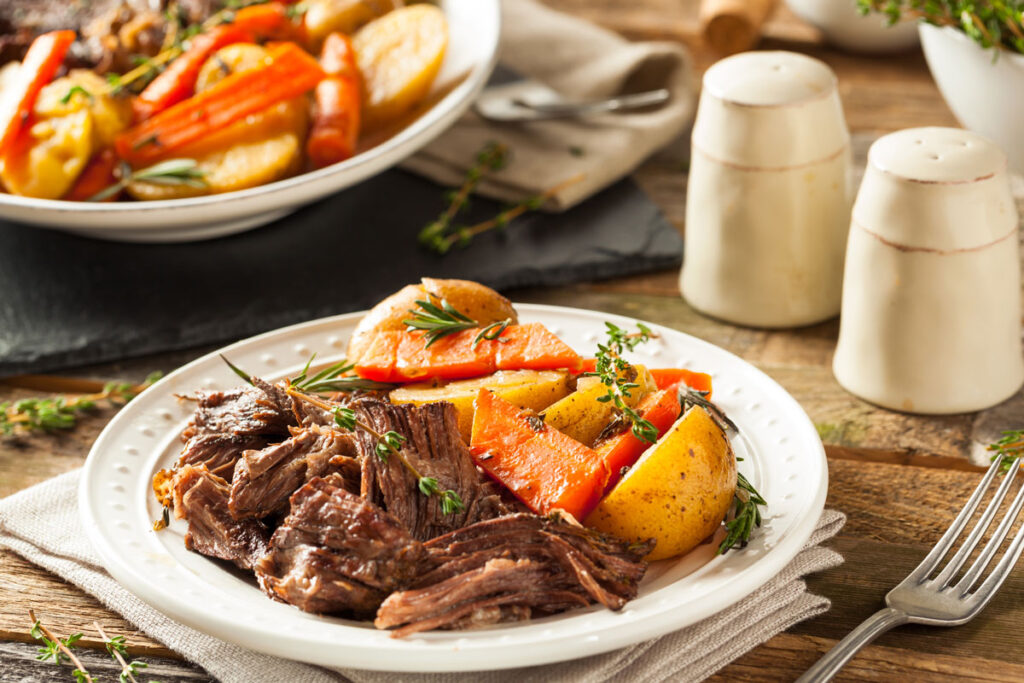
Fresh carrots from your vegetable garden taste nothing like their store-bought counterparts. As a carrot ages in storage, its natural sugars are converted to fiber, causing the flavor and texture to deteriorate.
Learning to grow carrots from seed also gives you access to many carrot varieties that are not available in grocery stores. Trying out a new type of carrot is especially rewarding.
When to Plant Carrot Seeds
You can start planting carrot seeds up to 2 to 3 weeks before the last spring frost date. I used to live in zone 7b, so I would sow my carrots in February. Now living in zone 8, I can sometimes sneak them in even earlier!
If the ground is not frozen, even if the temperature does drop below freezing, you can sow your carrot seeds. They can withstand a little bit of frost.
If you are unsure which zone you are in, this post on garden planning basics teaches you how to find your zone.
Why Won't My Carrot Seeds Germinate
Waiting until the ground thaws is important, but making sure you don't wait too long is just as important too.
Carrots won’t germinate if the temperature is over 80 degrees. You could learn how to plant carrot seeds perfectly, but if you do it when it's hot outside, it doesn’t matter how well you sow them, they won't germinate in the heat.
Additionally, the daytime temperatures need to be at least 40 degrees or above to get them to germinate very well. They need a little warmth to get them up out of the ground.
Aside from the general pickiness over the soil temperature, carrot seeds are just a bit difficult to deal with. The individual seeds are tiny which makes them hard to space, hard to maneuver, and very easily displaced.
Carrot seeds require pretty constant moisture to germinate, and cannot be planted very deep because they won’t have enough energy to make it through the soil when they sprout.
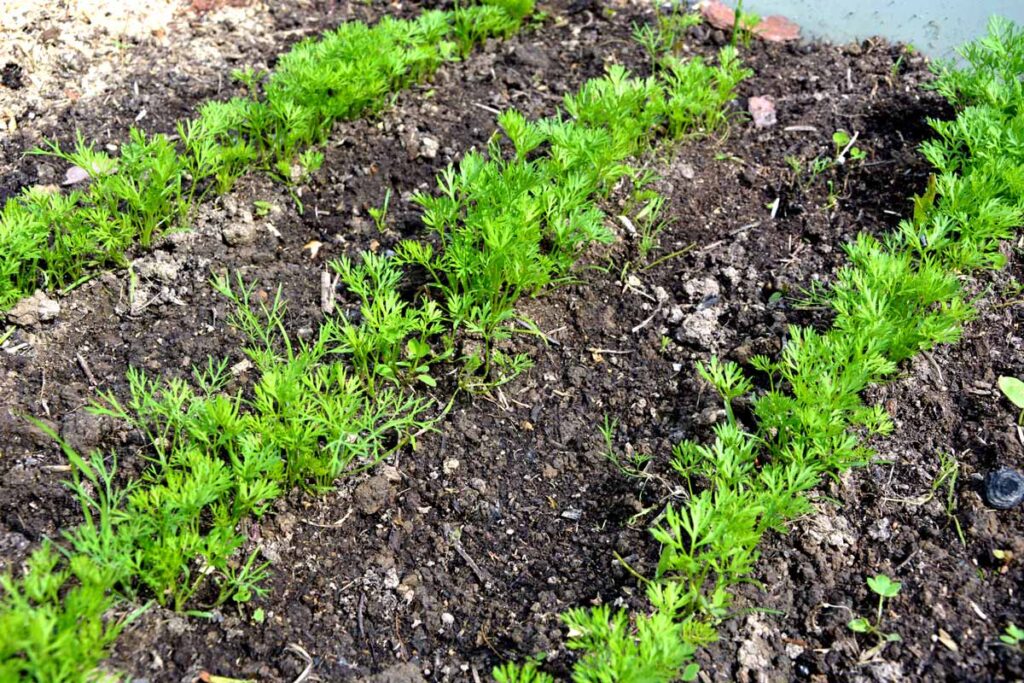
The Secret to Successful Germination
This can all feel discouraging as if knowing how to plant carrot seeds is just too difficult of a task. However, this trick to ensure germination has been a game-changer for me.
A humble board to place over your carrot seeds is all you need.
The board will keep the carrot seeds in place, the soil moist, protect the seeds from getting too hot in direct sunlight, and protect them from washing away if it rains.
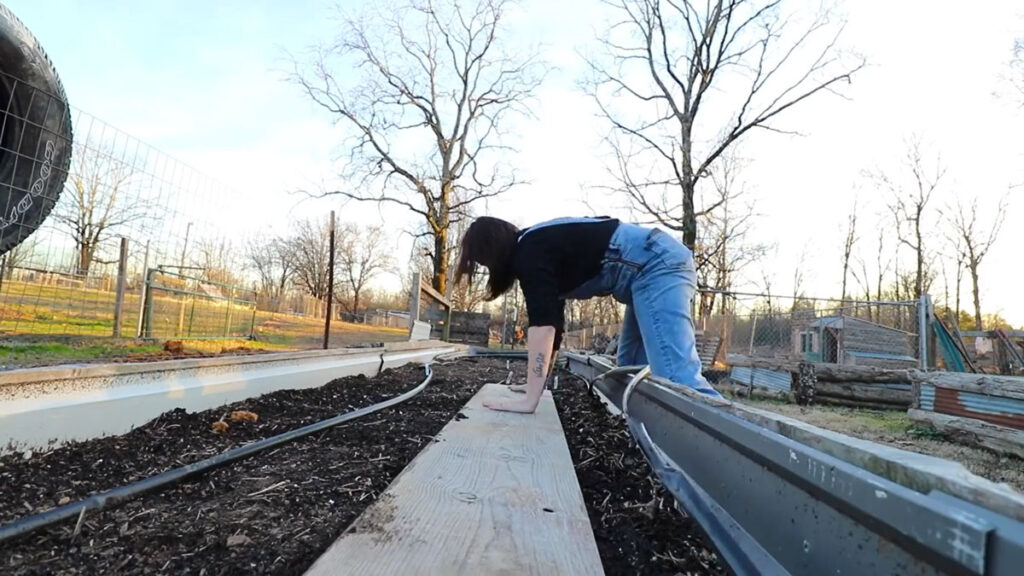
Supplies Needed
- Carrot Seeds – Here are my favorite places where I buy heirloom seeds. For further guidance on how many seeds to buy and how to store them check out my seed shopping method. Using seed tape is an added expense that really isn't necessary. If expense isn't a concern, and you have found a brand you have had success with, feel free to use it.
- Prepared Garden Bed – Learn how to build raised beds on a budget, or for smaller spaces, use other cheap container garden ideas. Carrots will grow in less than ideal soil, but if you want straight and pretty (not crooked or forked) carrots, you will need loose obstruction-free soil.
- Water – It is important to remember to water the soil BEFORE planting the carrot seeds to avoid washing them away.
- Wooden Board – An untreated board is critical so that chemicals do not leach into your garden soil. It should be large enough to cover the area planted.
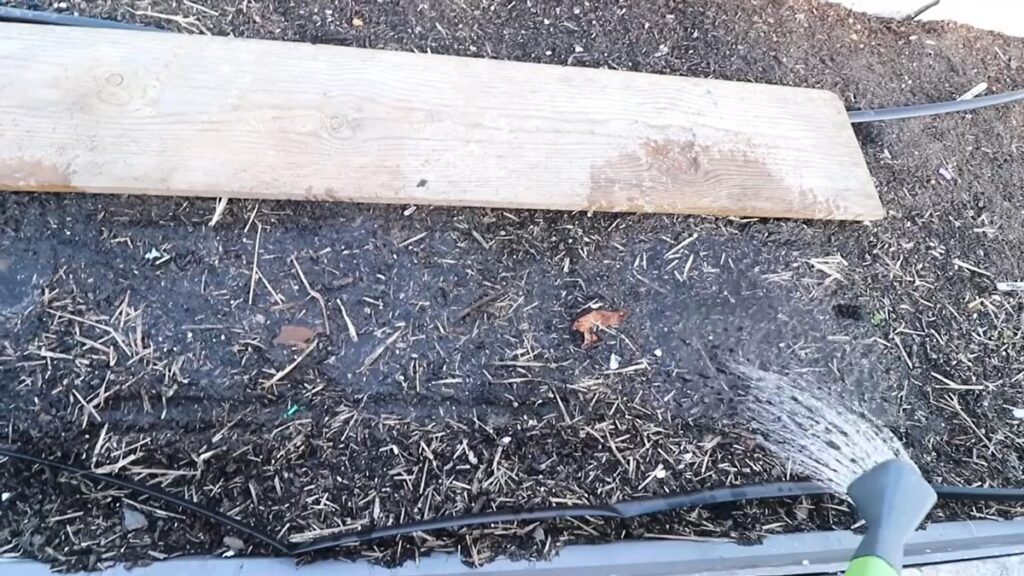
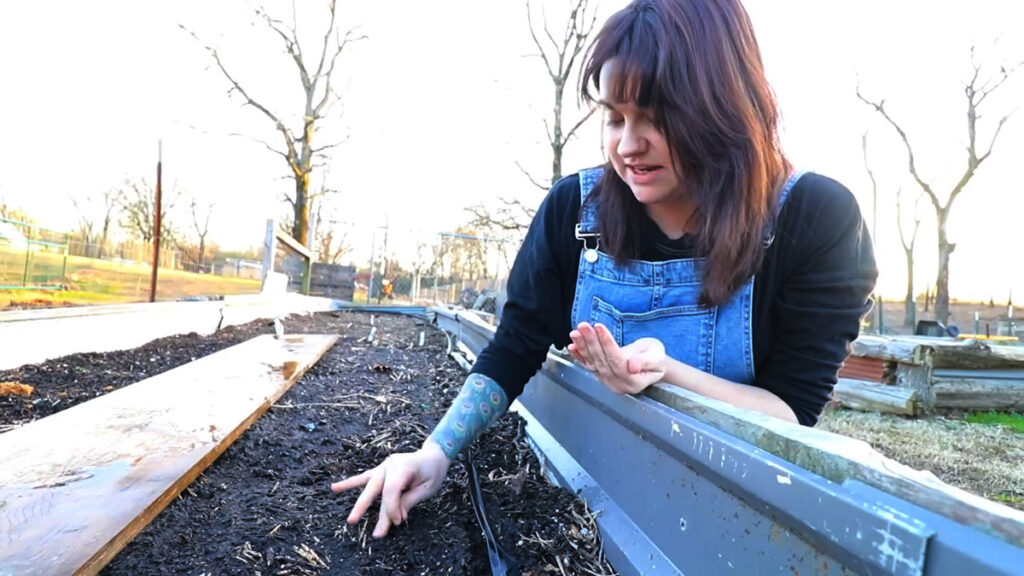
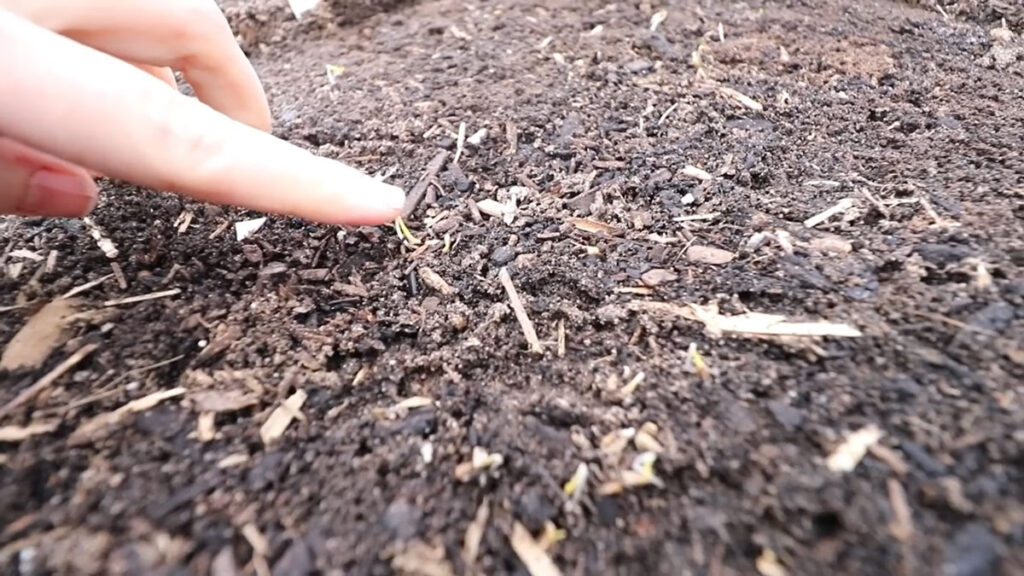
How to Plant Carrot Seeds
You do not need to start carrot seeds in an indoor greenhouse. The best method is to sow directly into the ground.
- Prepare your planting area by loosening the top layer of soil. Tilling or cultivating is not necessary. Simply rake through the soil with your fingers, and remove any large pieces of debris.
- Press the board into the soil gently to make an indention. Then remove the board and set it next to the planting area. This indention gives you the boundaries of your planting space.
- Completely saturate the soil with water BEFORE planting the seeds. Regardless of how level a garden spot is, there are always rivets and low areas that collect water. This is why carrot sowing is so difficult. If I had planted my carrot seeds first and then watered them, the seeds will all wash down into those channels and pools causing the carrot seeds to concentrate all in one area.
- Pour the carrot seeds into the palm of your hand, and press each seed individually into the soil no more than 1/4 inch deep, spacing about an inch and a half apart. It is nearly impossible to plant each seed individually every time. If you drop more than one seed, you will just need to thin the row of carrots later as they grow.
- Once the seeds have all been planted, place the board over the top and press firmly down to make sure the board is coming into contact with the soil. Tip: Do not remove the board and water under it with a hose. I did not water the seeds a single time while they were under the board. There was rainfall which kept the soil moist even though the board was covering it. If you do feel like your seeds need watering, I recommend watering all around it with the board in place. If you really think you need to water under the board, use a spray bottle on mist to avoid disrupting the seeds.
- Start checking for sprouts on day 5 or 6 after planting.
- As soon as you see sprouts, remove the board. The sprouts will be very pale because they haven’t seen the sunlight and will need to begin to photosynthesize in order to survive.
- If you are expecting a heavy storm or extreme cold, a row cover is helpful to protect the delicate carrot seedlings. Alternately, you can raise the board up with a brick on each side to provide some protection while still allowing light in.
- As they grow, thin carrot seedlings to about 2-3 inches between each carrot.
- Harvest carrots approximately 70-80 days after planting. Sometimes carrot tops will start to poke out of the soil, but the best way to know when they are ready is to simply pull one out to see how large it is.
